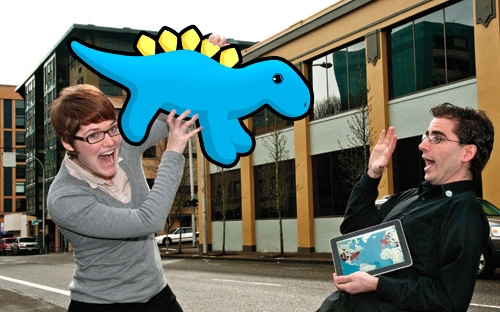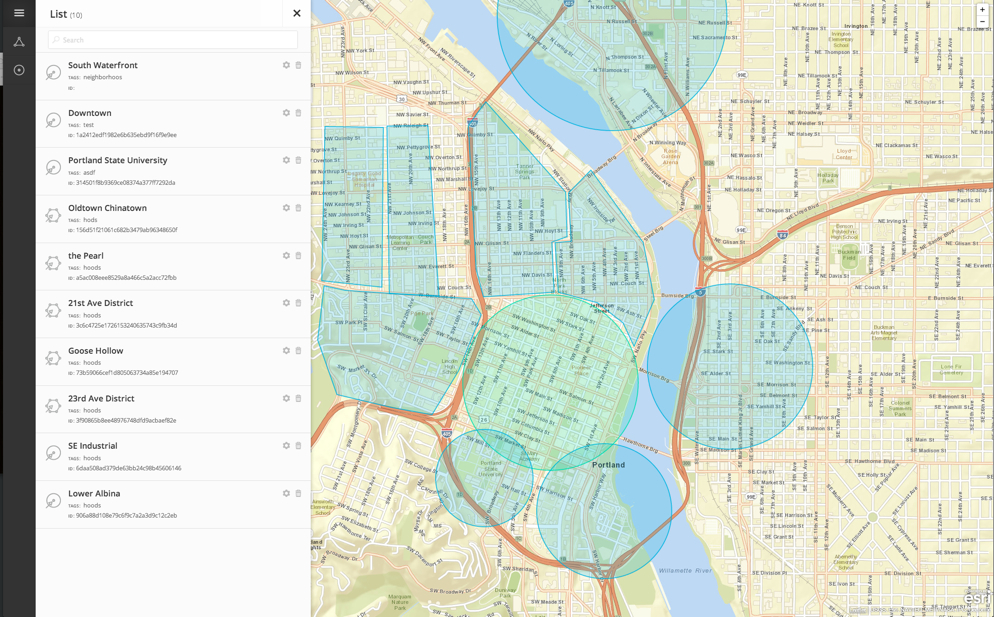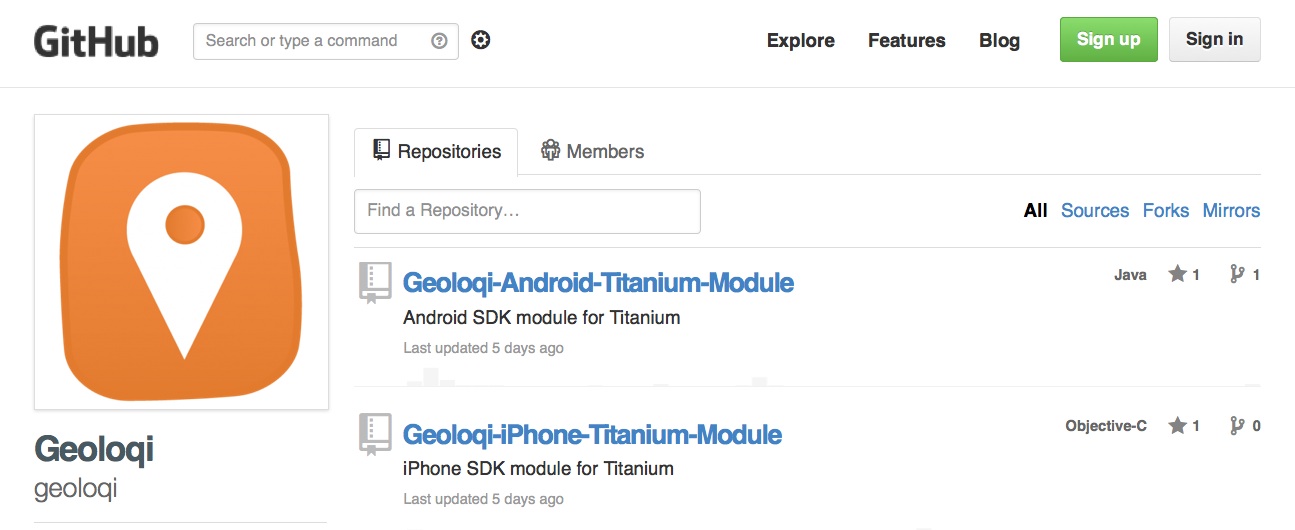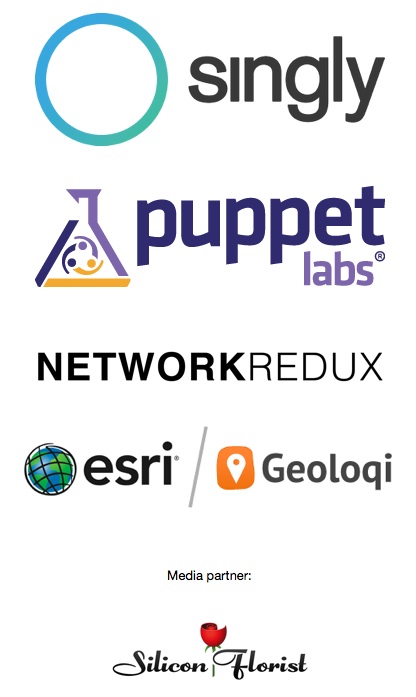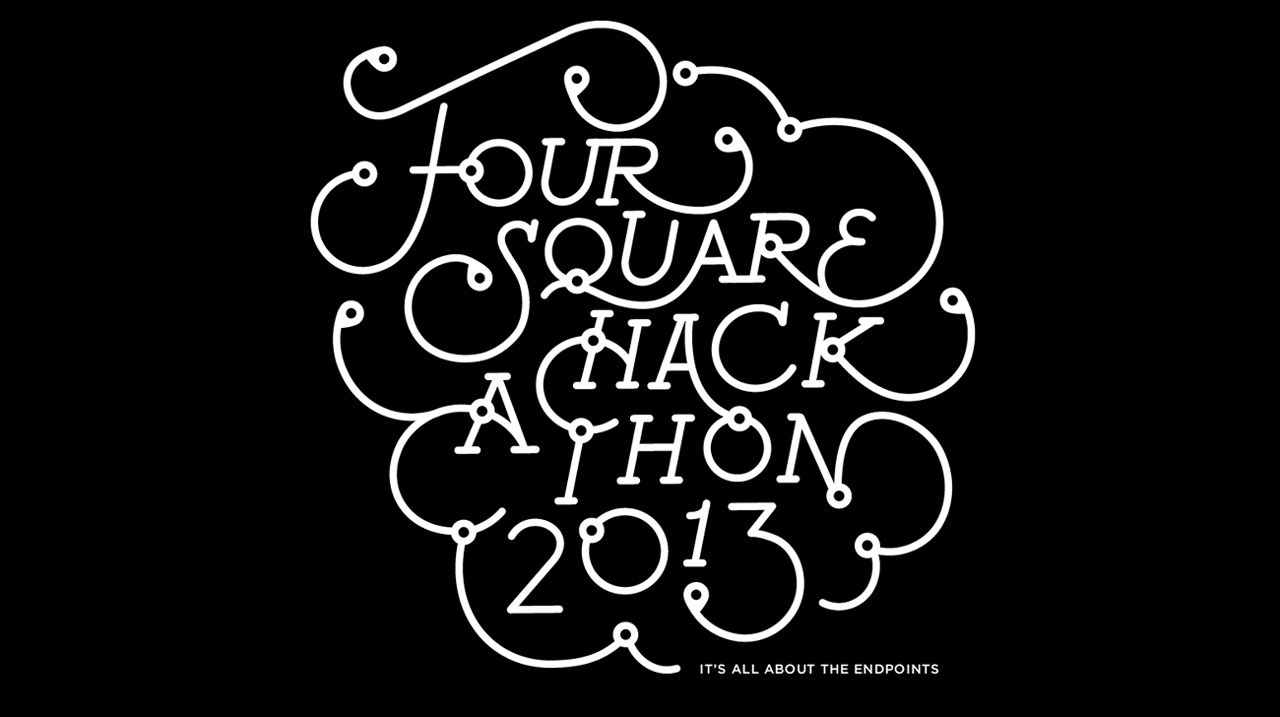The original Geoloqi service will be retired on August 19, 2015 (18 months from the time the Esri Geotrigger Service launched). We encourage current Geoloqi customers to migrate to Esri’s Geotrigger Service soon to take advantage of all the improvements.
Why use the new Geotrigger Service?
Geoloqi is now part of Esri, based in Esri’s R&D Center in Portland, Oregon. Most of our time and energy this past year went into improving our Geotrigger Service, which provides better GPS accuracy, ease of use, longer battery life, and attractive pricing. We also added the ability to create complex polygon triggers, and we built the Geotrigger Faker, which is a graphical tool that allows you to simulate the location of fake or real devices in order to better test and debug your app.
What about pricing?
The Geotrigger Service is one of the many features offered through ArcGIS. You can start a 30-day free trial right away. Subscriptions begin at $20 per month and you get 2,400 Geotrigger events per month. This represents a significant price improvement over the Geoloqi plans, as the new Esri plans offer three times the number of Geotrigger events.
Can I get help migrating?
If you haven’t migrated to the Esri Geotrigger Service by the end of 2014, we will have some migration tools available for you to help you switch over before the Geoloqi service is deprecated on August 19, 2015. You can also email [email protected] anytime for more information about how to migrate to the Geotrigger Service.
Have you been beta testing?
If you’ve been beta testing Esri’s Geotrigger Service, you should update your applications with the latest versions of the iOS and Android SDKs. There have been numerous upgrades to reliability and functionality throughout the beta period, and it is important that all applications use the released SDKs for best results and efficient technical support. For applications using the Android SDK, it’s also important that the Google Play service be installed.
We appreciate your using Geoloqi, and we think you’ll like the improved Esri Geotrigger Service even better.
For more information, check out the Esri Geotrigger Service web page, documentation and FAQ. If you have any questions, please email us at [email protected].
]]>How does it work? An invisible area on a map has an action or message associated with it. When your mobile device crosses into the “trigger zone” the Geotrigger Service sends a location-based message to that device, or even notify your server for custom events.
Here’s what you need to know:
- The Geotrigger Service runs in the cloud. That means all you have to do is add the Geotrigger SDK to your application, set up push notifications, and associate your client ID with the service. Finally, define your geofences, push notifications into the service, and begin testing your location-aware apps.
- The Geotrigger Service provides a new level of functionality for your apps! Now your apps can easily send messages to users when they arrive at or leave areas you define with a geofence. And, quickly gather business intelligence such as where people are and what time it is when the app is used.
- Stop worrying about battery drain. Have you used a location-based app and watched your battery drain? Our service reduces battery drain when running location-based apps.
- Free while in beta. ArcGIS Online subscribers are invited to try the Geotrigger Service API and its iPhone and Android SDKs for free until its final release in early 2014. We’ll use your feedback to shape the future of the service.
- The sky is the limit. We cannot think of any industry that would not benefit from an app built using the Geotrigger Service. Here’s some examples:
Retail and Loyalty: Engage customers with personalized content and deals the moment they enter a store.
Real Estate: Send messages to prospective home buyers when their search criterion matches a home nearby.
Energy Management: Use your location to automatically manage power consumption in your home or office.
Tourism: Bring public attractions to life by informing tourists of interesting locations as they explore your city.
Public Alerts: Notify citizens about events such as road closures or civic emergencies based on past locations.
Ready to build your next app with the Geotrigger Service to your app? Check out https://developers.arcgis.com/en/geotrigger-service/
]]>
Geoloqi is all about the real-time location data that supports the Geotrigger service, but we’ve been filling up cloud after cloud with extra data we realized our customers don’t really use.
Going forward, we will stop storing the raw location data points, and instead store the trigger history only – that is, the timestamp and latitude/longitude when a trigger is fired. New Geoloqi apps created after August 13, 2013 will not store location history, and in 30 days we will stop storing new location history for existing Geoloqi apps.
How will this affect my app(s)?
Odds are, it won’t. Unless your app needs to retrieve more than the last known location of a device, you shouldn’t notice a thing. Nothing besides location history is changing.
What if historical location data is important to me?
Do you currently use or plan on using your app’s historical location data? We can turn it on/leave it on for an additional charge/fee (as our normal pricing is just for our Geotrigger Service). Just let us know!
Exceptions
One of our customers uses Geoloqi to track where their app users are located currently, to send them Geotriggered messages, and to look at historical data on where they went, so we will continue storing historical location data for them and others on a case by case basis. The vast majority of our customers only need Geoloqi’s core technologies for their apps: Geotriggers, real-time location tracking, and geocoding.
What’s next?
We’re currently working on an updated version of the Geoloqi platform and an entire re-haul of the API. We aim to make the API easier to use, easier to get started, and require fewer API calls to run. In addition, we’re improving battery life, accuracy and stability of the platform as the number of devices, customers and users of our system grows. Over time, we’ll also be releasing special Geotrigger tools for ArcGIS users and customers, too! We’ll let you know when we’re ready to launch! Once the new API and SDKs are launched, we’ll be publishing a migration and update guide for existing customers, and will begin a wind-down of of the original service. We will provide at least one year (if not more) for all apps to update their SDKs to the new service.
Thanks!
Thanks so much for being a Geoloqi customer or considering using Geoloqi for your apps! We’re here to serve you, so if you have any questions, just let us know!
]]>On the iPhone, we’ve leveraged the native geofencing APIs to offer improved battery life compared to using the GPS directly. On Android, there have been minimal location services available from the SDK, essentially limited to turning the raw GPS device on or off.
Three new location APIs were announced today at Google I/O. This is great news for anyone building location-based applications. We’ve been eager for Google to improve the Android location services.
Fused Location Provider
The Fused Location Provider utilizes all of the communication sensors in the phone including wifi, GPS, and cell network, while using only 1% of the battery that previous APIs used.
This is a new service that will greatly improve any application that uses location services. We will improve the ArcGIS Geotrigger SDK for Android significantly by taking advantage of the new Location Provider. Expect to see much better battery life on the Android Geotrigger SDK in the future!
Geofencing
The new Google Geofencing APIs allow apps to respond to the user entering or exiting a configured geofence. The API allows each app to define 100 geofences simultaneously.
This is great news for the ArcGIS Geotrigger SDK, since we will be able to leverage this service to provide better battery life and performance in the SDK. Previously we were limited to turning on and off the GPS device. Now we will be able to use the geofencing API in combination with our optimization algorithms to better provide our Geotrigger service.
Activity Recognition
The new Activity Recognition API uses machine learning classifiers to determine whether the user is walking, cycling or driving. Apps will be able to adjust their behavior depending on the user’s mode of transport. This is done in a very battery efficient way, no GPS is required.
We will leverage this new API to make further improvements to managing the native location services, and it should open up possibilities for some interesting new apps to be built.
The ArcGIS Geotrigger Service
The ArcGIS Geotrigger Service allows developers to easily manage Geotrigger rules with a simple cloud-based API, while also supporting geofences defined as polygons. You can configure an essentially unlimited number of Geotrigger rules in the API, and only the nearby ones will be synced to the phone, making it easy to handle the limitations of the native APIs.
Many of the battery life issues people experience are due to poor implementations of using the Apple and Android location services. It’s easy for a developer to leave the GPS on all the time, but that drains battery quickly. The Geotrigger SDK efficiently manages the native location services and optimizes the server communication required to send location data, saving battery life wherever possible.
The improvements to the Android location APIs are fantastic news and will result in improved Geotrigger services and a better experience for developers!
Aaron Parecki
CTO, Esri R&D Center, Portland
Amber Case
Director, Esri R&D Center, Portland
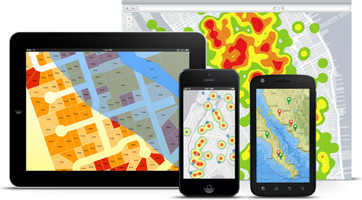
Esri is co-hosting a party with Stackmob and Voxeo Labs (Tropo) during Google I/O and you’re invited!
Hang out with us and enjoy complimentary food and drinks. This is a great opportunity to meet our partners, developers and customers. We’ll have developers and friends on hand to answer your any questions you might have about current and upcoming products!
Space is extremely limited (and almost full), so RSVP now to ensure your spot.
Esri, Stackmob+Tropo Developer Social @Google I/O!
When?
Wednesday, May 15, 2013 from 6:00 PM to 9:00 PM (PDT)
Jillian’s
175 4th Street
San Francisco, CA 94103
RSVP Link
]]>
We’ve had a great time making the Titanium module available for Geoloqi. As we move forward towards the next version of the Geoloqi platform, we’ve decided to consolidate our efforts around native SDKs and apps. We really enjoyed having a module for Titanium, but having a third SDK to maintain, develop and support takes our efforts away from providing the best SDKs for our iOS and Android. Although this may be disappointing news to some of you, we want to ensure the best quality of product possible, and ensuring that our SDKs work best on iOS and Android native applications is our first goal. As of this time, the Geoloqi module for Titanium has been removed from the Titanium marketplace, and starting July 2013, we will no longer be supporting Geoloqi for Titanium.
What does this mean for you?
If you have an existing application built with the Geoloqi module for Titanium, you’ll be able to continue using it until Dec 2014. We will continue providing support to non-enterprise customers through July 2013 and to our paying customers who are using the Titanium module through December 2014.
We’ll be releasing a new version of the Geotrigger platform and SDKs through http://developers.arcgis.com in June that will be available for native iOS and Android developers.
Update: Titanium Modules Now Open Source!
Due to interest, we wanted to make sure our community could still develop with the Titanium module. Below are links to the source code for the Geoloqi iPhone and Android Titanium Modules. Important! This code was not developed in house at Geoloqi, and is no longer supported by us. Due to time restrictions, we won’t be able to answer questions about this code. This code has been released under the Apache license.
iPhone SDK module for Titanium
Android SDK module for Titanium
Thank you,
Amber Case, Co-founder, Geoloqi

Esri/Geoloqi is sponsoring APIs and IPAs at Green Dragon on Jan 24th, 2013! We wanted to thank all of you for being such an incredible community, testing and supporting our efforts as young entrepreneurs, and helping us understand how to make better apps and developer tools. Come have a drink on us in one of the places where it all began – Green Dragon! Green Dragon is where I met my co-founder Aaron Parecki in October 2009, and it’s been a watering hole for the Portland tech community for years with the now defunct weekly Beer and Blogs.
Where?
The Green Dragon
928 Southeast 9th Avenue
Portland, OR 97214
When?
Thursday, January 24, 2013 from 6:00 PM to 8:00 PM (PST)
Calagator Link
What is APIs & IPAs?
It’s simple – you show up and some nice local companies foot the bill for drinks. Meet interesting people and talk shop, and that’s it! Join Singly, Puppet Labs, NetworkRedux, Esri/Geoloqi and Silicon Florist in celebrating the tech community in Portland!
Thanks to:
]]>Together we built interesting stuff, saw interesting hacks, and met lots of new people.
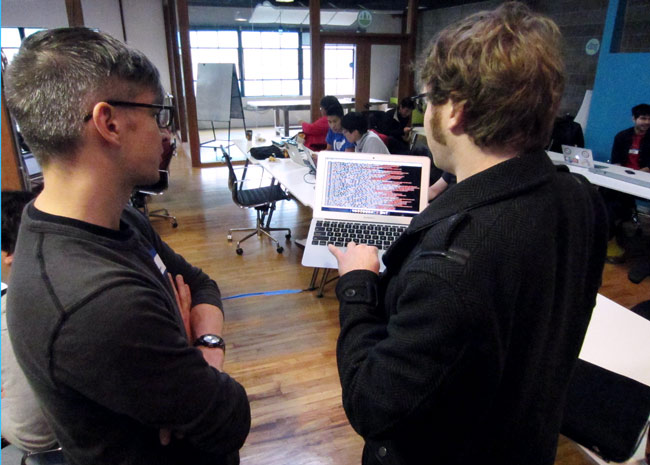
Esri/Geoloqi platform developer Kyle Drake (top right) shows the output of the NASDAQ API to a hackathon participant.

Jim Young and Bronwyn Agrios (top right) from the Esri SF get a demo from a fellow hackathon participant.

We awarded an iPad prize to Leah Vaughan (second from left) for her great use of an Esri map! Her app was called “Stuck at the Airport”. It recommends interesting places/things to see around you when you’re in transit areas (train satins, airports, rest stops, etc.).
Also, Kyle Drake, Aaron Parecki and I put together a hack using the NASDAQ and Foursquare APIs called NASDAQ Facts (below).
NASDAQ Facts for Foursquare tells you the stock price of every public company you check into. Stock markets are about more than numbers. Discover which places on Foursquare you visit are public companies, get information on how they are doing, and learn more about them by clicking on a link. The information automatically appears on your Foursquare app after checking into a place! (We ended up winning a flying shark for this hack!).

We finished our hacking early, so Kyle Drake hung out in the Foursquare office hammock.
See you next time!
You can see a list of all the Foursquare Hackathon projects here, as well as the local winners and global winners! If you’d like to build cool stuff with us in the future, let us know! Who knows? We may soon be coming to a hack day near you!
Follow us!
- @caseorganic – Director, Esri R&D Center, Portland
- @aaronpk – CTO, Esri R&D Center, Portland
- @kyledrake – Platform Developer, Esri R&D Center, Portland
- @jim2 – Esri SF office
- @bronwynagrios – Esri SF office
(You can find Jim and Bronwyn at SF’s Hatchery!)
]]>
Prizes!
Build something amazing and you might just find yourself ringing the NASDAQ closing bell, rocking tickets to SXSW, partying with an action figure version of yourself, or wearing the infamous foursquare hackathon TITLE BELT.
What tech can you use?
Interested in adding location-based messaging to an app? How about getting an alert when you are around items on you Foursquare todo list? Start with the Geoloqi SDK for iPhone or Android, then max it out with Esri maps, intelligent routing, geocoding and more. Consider what your app could do if it knew where it was all the time then add the awesomeness of Foursquare to the picture.
Check out the other ideas on the Hackathon Wishlist that require alerts based on proximity or dwell time.

Sign Up!
You can get a head start on this weekend by signing up for a free account on developers.geoloqi.com, checking out our GitHub repository github.com/geoloqi, and downloading our sample apps from the Apple or Android app stores (for the frequent flier, try Everyday City which lets you automatically share the cities you visit).
We’ll have folks from our SF and Portland teams there to get you started using the technology and brainstorm great ideas. Hope to see you there.
]]>Geoloqi HQ is now the the Portland Esri R&D Center! The two companies have joined forces, and we’re unveiling our first product together – a powerful new geocoding enhancement to the Geoloqi API. Geoloqi’s team, products and services will continue to exist and will be supported by the Geoloqi team.
In the future, Geoloqi products and services will be integrated into ArcGIS online and be available through a new developer-friendly pricing model similar to the existing Geoloqi model. The intent is to continue to improve products and services as they are rolled into the new combined platform. This will result in better support, user experience and sample code for developers, as well as an increasing number of opportunities for new and existing ArcGIS customers and new industry verticals.
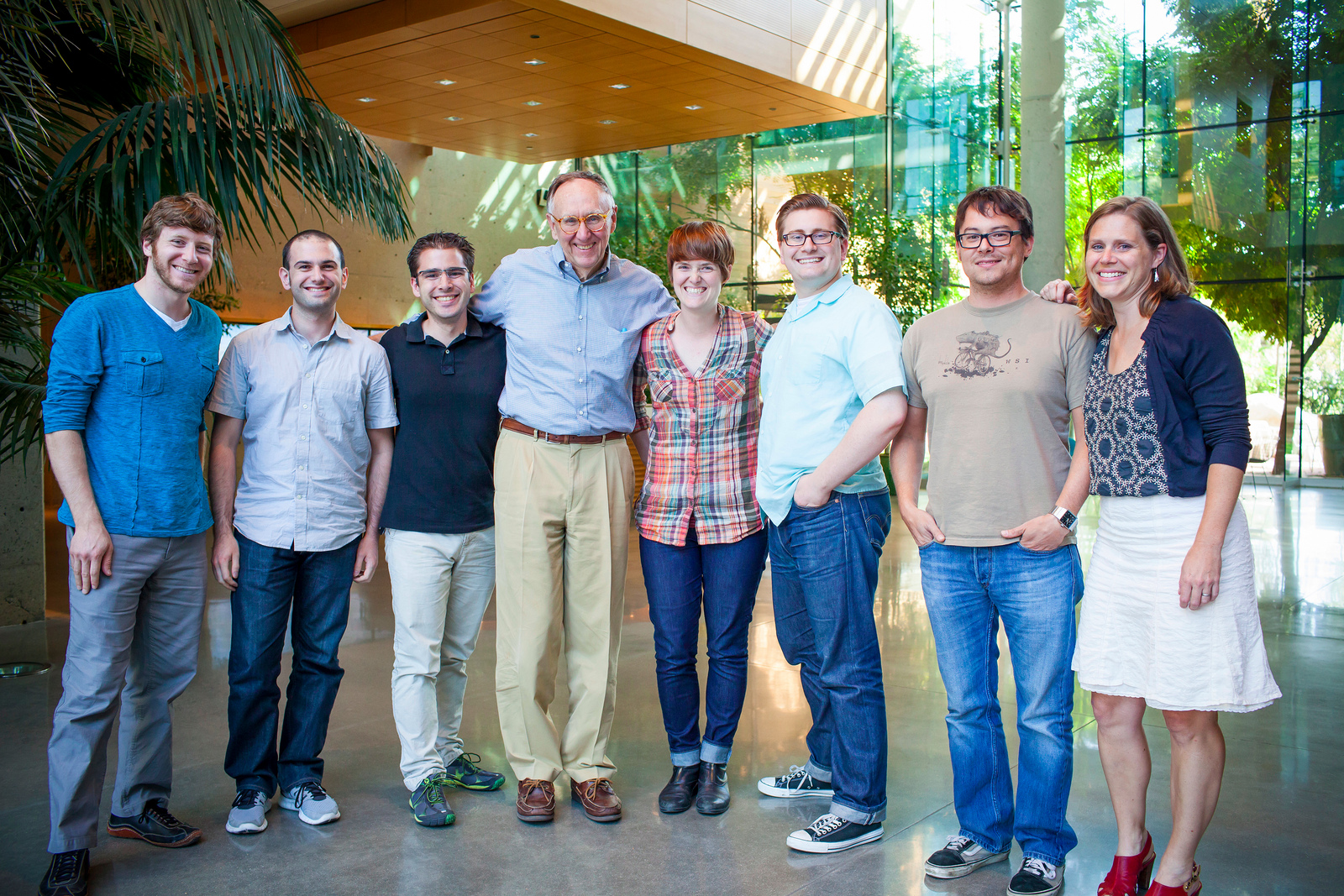
What new features can we expect with the acquisition?
Post-acquisition, developers will have access to a geocoding service powered by Esri, provided through the Geoloqi API.
Geocoding service overview:
The Geoloqi API now supports geocoding & reverse geocoding. The ArcGIS SDK provides an alternative to Apple’s maps for incorporating a map into mobile app, with support for any device. We are adding the geocoding capability to our existing API.
Geocoding
When creating a geotrigger rule, developers can now provide an address instead of a latitude and longitude. Internally, the Geoloqi API geocodes the address using the ArcGIS Geocoding service and finds the latitude, longitude and chooses an appropriate size for the trigger. This service will be live at the end of the day on Oct 15th.
Reverse Geocoding
When retrieving information about triggers that have run, or the locations of devices, the information returned is now enriched with the city, state and country of the location by using the ArcGIS Reverse Geocoding service. We can also provide the street address for reverse geocoding.
MapKit Alternative
Esri and Geoloqi will offer a new mapping library powered by the ArcGIS SDKs for iOS. The release of the ArcGIS alternative to MapKit will allow developers to have more options for maps in iOS 6 and beyond. The ArcGIS iOS SDK provides developers with an alternative to MapKit, the default mapping library on iOS. The ArcGIS SDK provides access to high quality map tiles in a programming interface similar to MapKit.
Why is this awesome?
Many external geocoding services have strict limits on usage and licensing, and many don’t allow developers to store the results of the geocoding API call, only letting them use the data one time. With Esri, you own your own data. The results of the geocode can be used in conjunction with any other service.
How can we get it?
Enterprises and developers will be able to buy Geoloqi’s core features and geocoding service powered by Esri through Geoloqi’s website. See Geoloqi’s pricing page for details. In the future, all of Geoloqi’s features and products will be available in the same form through ArcGIS online with an improved and developer-friendly pricing model and feature set.
Who is Esri?
Esri develops geographic information systems (GIS) software that functions as an integral component in nearly every type of organization. On any given day, more than a million people around the world use Esri’s ArcGIS software. In addition, Esri has over 350,000 customers, serving many verticals. Esri was founded in 1969 by Jack and Laura Dangermond and employs 2,900 people worldwide.
Who are Esri’s customers?
Over 350,000 customers, serving many verticals.
How much did Esri purchase Geoloqi for?
Esri is a private company. The purchase price is undisclosed.
Follow Us!
You can follow @geoloqi and @esri on Twitter for more information.
Any other questions?
You can read more in the Geoloqi Acquisition FAQ.
And one more thing…
We’re keeping the dinosaur!
